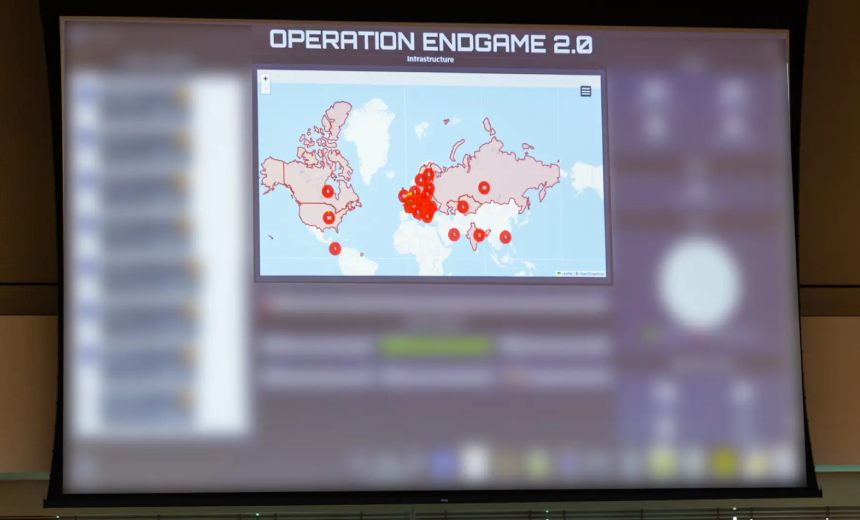Cybercrime,
Fraud Management & Cybercrime
Law Enforcement Dismantles 300 Servers Globally, Disables 650 Domains

In a prominent European-led initiative against malware often utilized as a precursor to ransomware, law enforcement agencies have successfully dismantled 300 servers across the globe. This operation, which took place from May 19 to May 22, also resulted in the neutralization of 650 domains associated with various malware types, including Bumblebee, Lactrodectus, Qakbot, Hijackloader, DanaBot, Trickbot, and Warmcookie. Europol emphasized that this campaign delivered a significant blow to the ransomware kill chain.
Last year’s “Operation Endgame” had similarly focused on dismantling botnets and is recognized as the largest coordinated international effort against such threats. This year’s operation aimed at addressing new malware variants and emerging groups, demonstrating law enforcement’s capacity to adapt and respond effectively to evolving cyber threats. Europol highlighted that even as cybercriminals reorganize, operations like these are essential to counter their tactics.
The scope of the operation extended to issuing international arrest warrants for 20 suspected Russian malware developers, many of whom are already on U.S. law enforcement’s radar. In a neighboring development, U.S. authorities recently seized command and control servers associated with DanaBot while also unsealing indictments against 16 members of a Russia-based cybercrime organization linked to this malware.
Additionally, U.S. law enforcement and Microsoft announced the seizure of critical infrastructure and thousands of domains related to the Lumma Stealer. Federal prosecutors have indicted 48-year-old Rustam Rafailevich Gallyamov, tracing his involvement with Qakbot malware operations back to 2008.
This recent week has seen multiple takedowns and prosecutions focused on malware that typically leads to ransomware attacks. The hackers responsible for these initial infections often sell access to compromised systems or collaborate directly with ransomware groups. Among the domains targeted, 50 servers were located in Germany, and Frankfurt’s Public Prosecutor’s Office listed 18 individuals associated with Trickbot and Qakbot on the EU Most Wanted list.
These actions resonate significantly within the framework of the MITRE ATT&CK Matrix, where initial access tactics, persistence methods, and privilege escalation techniques are critical for understanding the ongoing and evolving nature of cyber threats. As businesses continue to refine their cybersecurity strategies, it is essential to comprehend how such adversary tactics might manifest and the steps necessary to counteract them effectively.
